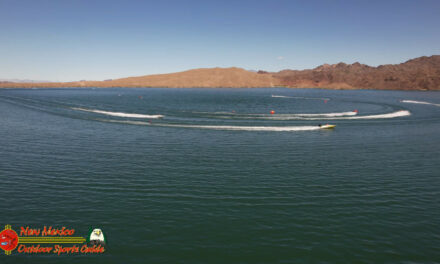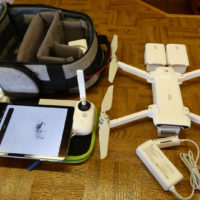The training of dogs for hunting purposes requires a knowledgeable trainer with a firm hand AND a kind heart. Dogs are trained in Texas to retrieve birds, primarily duck and geese. Pheasants and quail are also birds of prey in Texas that dogs are very useful in hunting. Some even say it’s impossible to hunt quail without a dog because a bird dog is necessary to locate and flush the covey. It should be noted here that there are two distinct types of hunting dogs: the retriever that is used to retrieve the duck or goose that falls in the lake or marsh and the bird dog that is used to point to and flush quail. This article will focus on the training of retrievers.
I researched the training methods of several well-known trainers of retrievers. Although each had different ideas about small aspects of the training process, all share the same basic concepts about training a retriever to hunt.
The first question when training a retriever is, “What breed of retriever is best?” Richard A. Wolters, is the author of several books on hunting dogs and has developed techniques for training hunting dogs for the dog owner who wants to train his dogs himself. In Water Dog, he recommends potential dog owners to visit a field trial, where hunting conditions are simulated in a competition setting, and “watch the dogs work.” Each breed is different in certain aspects, he says, such as the dog’s coat. Potential breeders should pay attention to what breed is available with which to breed their *****es, he adds.
The big three breeds to look at, for retrieving, he says, are the Labrador retriever, the Golden retriever, with its long coat, and the Chesapeake Bay retrievers. “If you can find the flat coat, curly coat retriever or the Irish water spaniel,” he says, “don’t overlook them.”
Jeff Campbell owns and operates Katybrook Kennels Retriever Country in Hockley, Texas, located nine miles north of Katy. He specializes in training all types of retrievers for hunting in any bird season. Jeff will take a dog to train anytime after the dog is six months old. Prior to the dog turning six months old, the owner has a responsibility, Campbell says, to help develop retrieving instincts in the dog and let it become “a grand game.”
“A dog that has those instincts developed before the intensive training begins is much easier to train and becomes a better hunting dog,” according to Campbell.
Kerry V. Kern has written extensively on canine training and care. In his book, Labrador Retrievers, A Complete Pet Owner’s Manual, he recommends starting the puppy as early as eight weeks on some elementary retrieving exercises..
The training period for a retriever spans from four to six months at Katybrook Kennels, but Campbell also trains any breed of dog for obedience in a one-month course for which the dog is boarded for the month.
Jelly is Campbell’s Labrador retriever and she is extremely well trained. She is now 7 1/2 years old and has won two derbies, or field trials for dogs under two years, and has qualified all-age, which is a very high achievement for a competition hunting dog. Jelly’s father is a National Amateur Field Champion (NAFC) named NAFC Trumarcs Zip Code, or Cody for short. Her mother is Doc’s Country Classic.
Jelly is a champion because she’s had good breeding and also because Campbell has shown her a firm hand AND a kind heart. He believes in not over-doing it with the reprimands. “In training retrievers,” he says, “ you must keep the dog’s spirit alive at all times. When making a correction, do not overwhelm the dog so that he has a hard time recovering.”
Campbell believes that the training should not end when the dog goes home. The dog’s return home should be the beginning of a new phase in the process. “The whole key to training is that when the dog goes home, the owner needs to follow up on the dog’s training and the dog will excel and the two will become a team.”
Most hunters have their dogs trained the summer before the bird hunting season begins. Some dogs receive refresher courses each summer. Texas summers can be brutal and Campbell warns owners to beware of heat stroke. He says, “have two large bags of ice on hand in coolers to cool down the dogs if they get too hot.” A dog’s normal temperature is between 100.5 to 102 degrees F (38-38.9 degrees C). When cooling off the dog with ice, Campbell says, be careful not to bring the temperature below normal because the dog may go into shock.
Arnold Boudreaux owns Schomer Kennels in Cut ’n Shoot, Texas, located northeast of Houston. He has been training dogs for over 30 years in Morgan City, Louisiana, and in Texas. He trains primarily retrievers and, in addition to basic obedience, he only trains dogs to hunt.
Boudreaux tries to train the dogs in water in the summertime. A well-trained dog, he says, should be trained on land and in water.
Boudreaux has some tips for the owners of hunting dogs: “I recommend that potential dog owners investigate the blood lines of the dogs before the purchase. Don’t just buy the dog because someone said it was a good dog. Go by what the mother and father are like to tell what your dog is going to be like.”
The 49th day of the puppy’s life is the day Boudreaux recommends taking the puppy from its litter. This, he says, is a theory developed over 30 years ago by the trainers of seeing-eye dogs, On this day, so the theory goes, the bond that has developed between the dog and its littermates can most easily be transferred to a human family, and not a day before or later.
On the other hand, Kern recommends that puppies wait until their eighth week to be separated from their littermates. He calls the first eight weeks of a puppy’s life “the canine socialization period” and he says that if a puppy is taken before the eighth week, “the puppy may not have fully learned the lessons of animal socialization.” The animal may grow to react aggressively to other dogs.
Labrador retrievers are excellent hunters and their owners are blessed with a breed that loves to learn. Dog hunting with a well-trained retriever is exciting and a reliable conservation tool. The dog can retrieve birds from places where most hunters can’t get to it or can’t find it and would otherwise leave behind.
It is vital that the owner also be a part of the training process. Each dog has its own idiosyncrasies that the trainer must identify and teach to the owner before the dog goes home. – Lake Havasu
– Lake Havasu












